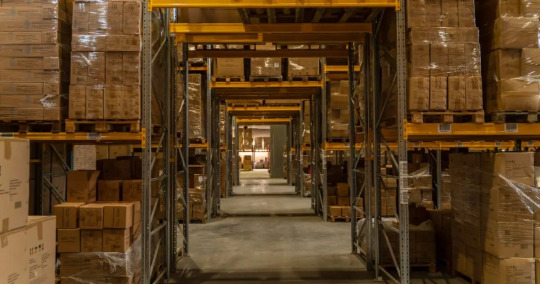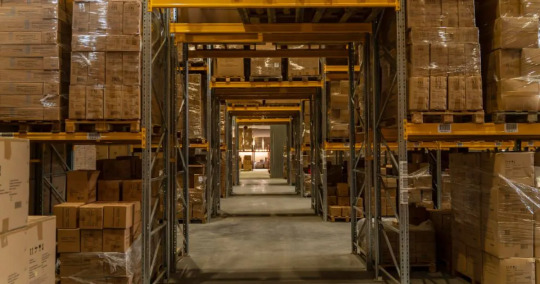Text
A Guide to Warehouse Racking
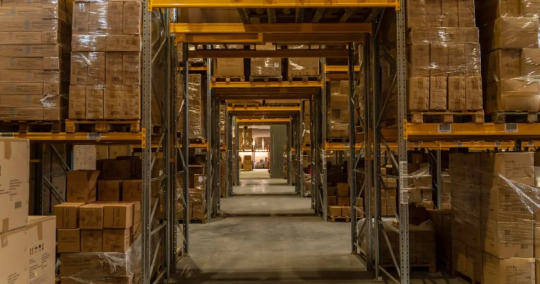
Warehouse organization is not just about storing goods; it's a critical component of effective supply chain management. A well-designed racking system is essential for maximizing warehouse efficiency and ensuring the quality and safety of stored goods. In this guide, we will explore the different types of racking systems and provide tips on choosing the right one for your needs.
The Importance of Effective Warehouse Racking Imagine running out of storage space in your warehouse. The options for expanding space, such as renting additional space or building a new facility, are time-consuming and costly. A more efficient solution is to maximize the existing space with a well-planned racking system, which not only saves time and money but also enhances the overall functionality of your warehouse.
FAST Principle & Approach in Warehouse Designing
The FAST Principle in Warehouse Design The FAST principle is a systematic approach to warehouse design, focusing on four key aspects:
F for Flow: Ensuring a smooth flow of goods in and out of the warehouse.
A for Accessibility: Making sure all items are easily accessible for efficient operation.
S for Space: Utilizing the available space to its fullest potential.
T for Throughput: Optimizing the warehouse's capacity to handle goods efficiently.
Applying the FAST principle helps in creating a racking system that optimizes storage, ensures safety for both products and employees, and provides timely access to resources.
Types of Warehouse Racking System
In the realm of warehouse management, the strategic selection of a racking system can greatly enhance operational efficiency. Each type of racking system offers unique advantages and is suitable for specific kinds of inventory and warehouse operations. Here's an expanded overview of various warehouse racking systems, illustrated with examples to provide a clearer understanding of their applications:
Selective Racking: This is the most versatile and widely used racking system, offering easy access to every pallet. It is particularly beneficial for warehouses that store a wide variety of items, each in relatively low volumes. For instance, a distributor dealing with diverse but limited consumer goods like electronics or household items would benefit from selective racking, as it facilitates quick access and easy stock management.
Static Racking: Ideal for items that require long-term storage without frequent access, static racking is a stable solution that keeps goods securely in one place. For example, a company storing backup equipment or archival materials that are not needed regularly would find static racking advantageous due to its sturdy and immobile design.
Mobile Racking: These are mounted on motorized carriages and can be compacted together to save space, then expanded as needed. This type of racking is perfect for storage environments where space is at a premium but access is still occasionally required. An example could be a retail stockroom where seasonal items are stored compactly during off-seasons and accessed only when the season changes.
Industrial Wire Partition Racking: This system enhances the security and safety of stored items, making it ideal for valuable or hazardous materials. For instance, a pharmaceutical company might use industrial wire partition racking to securely store sensitive drugs that need to be protected from unauthorized access while ensuring ventilation and visibility.
Drive-In Rack: These are designed for storing large quantities of similar items and utilize a LIFO (last in, first out) storage method. This system is best suited for items that are not date-sensitive, such as canned goods or materials that do not expire. A beverage manufacturer could use drive-in racks to store bulk quantities of bottled products, maximizing storage density and space.
Multi-Tier Racking: By utilizing vertical space, multi-tier racking systems are perfect for operations with limited floor space but sufficient ceiling height. This system can effectively double or triple the available storage area. For example, auto parts stores often use multi-tier racking to organize small parts across different levels, making efficient use of vertical space.
Push-Back Racking System: This system allows for storing pallets 2-5 deep and operates on a LIFO basis, offering higher density storage. It's particularly useful in scenarios where space is constrained but batch volume storage is necessary. A food distributor, for example, might use push-back racking to store multiple pallets of the same product, allowing older items to be used first while newer stock is pushed to the back.
youtube
Things to Consider Before Designing Your Warehouse Racking System
Each of these racking systems can be tailored to the specific needs of a warehouse, ensuring that the space is used efficiently and that inventory is managed effectively. When choosing a racking system, it is crucial to consider not just the current requirements but also potential future needs to ensure scalability and adaptability.
When planning to design your warehouse racking system, it’s crucial to consider several key factors to ensure you select the most suitable system for your operations. Here’s an expanded description of the considerations you should keep in mind:
Budget: Before embarking on the installation of a new racking system, it's essential to thoroughly evaluate your financial capacity. This includes not only the upfront costs of purchasing and installing the racking system but also ongoing maintenance expenses. These costs can vary significantly depending on the complexity and scalability of the system you choose. Planning your budget carefully will help you avoid overextending your financial resources and ensure that the system you select offers the best value for the investment.
Safety Requirements: Safety is paramount in warehouse operations to protect both your inventory and your workforce. Assess the specific safety requirements needed for your operations, considering the weight and nature of the goods stored. Ensure that the racking system adheres to local safety standards and regulations. This might include features like seismic rating for earthquake-prone areas, fire safety compliance, and the strength to safely bear the loaded weight. Regular safety audits and training for your staff on how to properly use and maintain the racking system are also crucial components to consider.
Flooring Inspection: The integrity and capacity of your warehouse floor are fundamental to the success of your racking system. Inspect the flooring to ensure it can support the weight of the racking units fully loaded with goods. This might involve professional assessment of the floor’s load-bearing capacity and the installation of reinforcements if necessary. The levelness and condition of the floor can also affect the stability of the racking system, so addressing any irregularities or damage is vital before installation.
Forklift Accessibility: Efficient material handling is critical to warehouse operations. Ensure that the layout of your racking system is accessible for forklifts or other machinery used in your operations. This includes considering aisle width to accommodate turning radii, overhead clearance, and ensuring that load and unload zones are optimally positioned to reduce traffic and potential bottlenecks. The type of forklifts used (e.g., reach trucks, side loaders) will also influence the design of the system, particularly the aisle width and rack configuration.
Versatility & Flexibility: The needs of your business will inevitably evolve over time, so choosing a racking system that can adapt to changing demands is beneficial. Consider modular or adjustable racking systems that can be reconfigured as needed without significant disruption or additional costs. This flexibility can accommodate changes in the type of products stored, fluctuations in inventory levels, or shifts in operational strategy. Furthermore, scalability is essential; the racking system should allow for easy expansion, either vertically or horizontally, to increase storage capacity as your business grows.
Maximize Your Warehouse Storage by Choosing the Right Racking system
Choosing the best racking system is a significant part of inventory management. It helps you optimize your storage and control expenditure on warehouse management by avoiding frequent maintenance and alterations.
When it comes to warehouse optimization and installation, you might be spending a huge amount to make it beneficial in the long run. So for choosing the best method you need to consider the factors that are mentioned below. If you are concerned about installing the right racking technology into your warehouse unit, you don't need to worry, 3PL partners will help you efficiently manage your warehouse by understanding your storage requirements. So, get in touch with a full-fledged 3PL provider to make your warehouse management quick & hassle-free.
0 notes
Text
Full Truck Load (FTL) Services in Tamil Nadu, Kerala, Karnataka, Andhra Pradesh, Telangana
Look no further than Driver Logistics for Full Truck Load (FTL) Services in Tamil Nadu, Kerala, Karnataka, Andhra Pradesh, Telangana. Their primary goal is to optimize clients' supply chains and assist them in achieving their objectives. Recognizing the importance of enabling thriving businesses to prioritize their core functions, Driver Logistics takes on the logistical responsibilities, empowering businesses to excel in their primary endeavors. As a trusted third-party logistics provider (3PL), Driver Logistics brings extensive expertise, a strong network, and advanced technology to ensure seamless B2B fulfillment and logistics operations across various industries. By leveraging their specialized knowledge, they streamline processes, reduce costs, and enhance overall efficiency in your supply chain, regardless of the size of your business. Choosing Driver Logistics instills confidence in their ability to effectively manage your Full Truck Load (FTL) requirements, allowing you to focus on your core operations and drive your success forward.
0 notes
Text
Warehousing Services in Tamil Nadu, Kerala, Karnataka, Andhra Pradesh, Telangana
For exceptional Warehousing Services in Tamil Nadu, Kerala, Karnataka, Andhra Pradesh, Telangana, consider Driver Logistics. Their primary goal is to optimize clients' supply chains and support them in achieving their objectives. Understanding the importance of enabling thriving businesses to prioritize their core functions, Driver Logistics assumes logistical responsibilities to empower businesses to excel in their primary goals. As a trusted third-party logistics provider (3PL), Driver Logistics brings extensive experience, a robust network, and advanced technology to ensure seamless B2B fulfillment and logistics across various industries. Leveraging their expertise, they streamline processes, reduce costs, and enhance overall efficiency in your supply chain, regardless of your business size. Choosing Driver Logistics instills confidence in their ability to effectively manage your warehousing and logistics needs, enabling you to focus on your core operations and drive your success forward.
0 notes
Text
Navigating the Evolution of Logistics: Unveiling the Benefits and Challenges of 3PL and 4PL Services
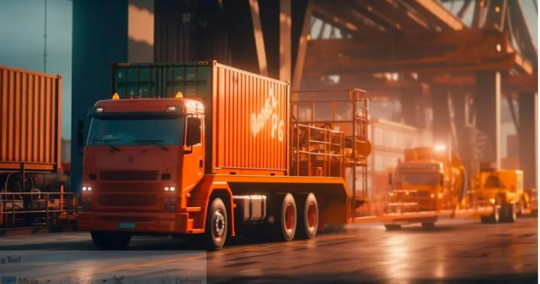
The logistics sector in India stands at a crossroads, with its value projected to soar from US$ 250 billion in 2021 to a staggering US$ 380 billion by 2025. This surge is fueled by a robust year-on-year growth rate of 10%-12%, positioning logistics as the linchpin of the Indian economy. The National Logistic Policy, launched recently, underscores the government's commitment to efficient infrastructure development, emphasizing the need for a holistic approach, including the pivotal roles of Third-Party Logistics (3PL) and Fourth-Party Logistics (4PL) service providers.
The Rise of 3PL and 4PL: Transformative Forces in Indian Logistics
In the intricate web of logistics, 3PL and 4PL service providers have emerged as transformative forces, steering the sector toward innovation. The India 3PL market, currently estimated at USD 37.31 billion in 2023, is projected to reach USD 53.02 billion by 2028, exhibiting a noteworthy CAGR of 7.28% during the forecast period. Amidst a market characterized by fragmentation, both domestic and international players vie for business, driven by the growth of the manufacturing sector. The warehousing sector, in particular, has become a magnet for significant investments from global and private equity players, positioning India as a burgeoning market.
Read More: Building Resilience in Your Supply Chain: Strategies for Future Disruptions
Challenges in the Logistics Landscape: Navigating Hurdles for Sustainable Growth
Despite its promising trajectory, the Indian logistics sector confronts substantial challenges that require strategic attention for sustained progress. The primary hurdles include:
1. High Logistics Costs: India's logistics costs remain elevated, constituting 13-14% of the GDP—significantly higher than the global average of 8-10%. Outdated manual processes contribute to inefficiencies, resulting in poor visibility, inventory inaccuracies, and delays.
2. Slow Tech Adoption: Sluggish adoption of transformative technologies hampers progress, leading to outdated processes and limited supply chain visibility. A mere 15% of logistics companies in India have embraced advanced technologies like the Internet of Things (IoT) and data analytics.
3. Green Practices Adoption: The 3PL logistics sector significantly contributes to carbon emissions, necessitating the adoption of more eco-friendly approaches. Challenges such as a lack of access to renewable energy sources and limited electric vehicle charging points underscore the importance of collaborative efforts for sustainable practices.
4. Fragmentation with Few Organized Players: Merely 10% of warehouses in India are organized players, contributing to sector fragmentation. The lack of standardization and coordination among stakeholders leads to operational inefficiencies.
The Ascendance of 3PL and 4PL: Opportunities Unveiled
Amidst these challenges, the rise of 3PL and 4PL service providers signifies a pivotal shift toward more specialized and integrated logistics solutions. Their expertise contributes to enhanced operational efficiency, improved customer satisfaction, and cost optimization. The rapid growth of the logistics sector presents abundant opportunities for organized players, including 3PL and 4PL service providers, to capitalize on the expanding market and cater to the evolving needs of businesses in India.
This evolutionary phase is not merely a response to challenges but a strategic embrace of opportunities that augur well for the industry's future.
Specialized Solutions for Complex Challenges:
In the face of formidable challenges, 3PL and 4PL providers stand as vanguards, introducing a new paradigm of logistics solutions marked by specialization and integration. These service providers bring a depth of expertise that goes beyond conventional approaches, contributing significantly to the industry's operational efficiency. Their ability to tailor solutions to meet the unique demands of diverse supply chains fosters a level of agility and responsiveness that is indispensable in today's dynamic business landscape.
Enhanced Operational Efficiency:
At the heart of the transformation lies a commitment to enhancing operational efficiency. 3PL and 4PL providers, armed with a comprehensive understanding of logistics intricacies, streamline processes, optimize workflows, and introduce cutting-edge technologies. This results in a logistics ecosystem that is not only more efficient but also agile, capable of adapting swiftly to evolving market demands. The meticulous orchestration of the supply chain by these providers ensures that each link operates harmoniously, culminating in a seamless and efficient logistics network.
Elevated Customer Satisfaction:
Customer satisfaction is the touchstone of success in the logistics domain, and 3PL and 4PL providers excel in this crucial arena. By offering tailored solutions, real-time visibility, and proactive issue resolution, these providers create an experience that transcends traditional service standards. The heightened customer satisfaction is not merely a byproduct but a strategic outcome of their commitment to understanding and addressing the unique needs and challenges faced by businesses operating in diverse sectors.
Optimized Costs for Sustainable Growth:
Cost optimization stands as a cornerstone of the value proposition presented by 3PL and 4PL providers. In an era where competitiveness hinges on fiscal prudence, these logistics partners play a pivotal role in optimizing costs across the supply chain. Through the deployment of advanced technologies, data-driven decision-making, and efficient resource utilization, they contribute to a leaner, more cost-effective logistics ecosystem. The ripple effect of these optimization efforts extends beyond immediate gains, fostering sustainable growth for businesses in the long term.
Abundant Opportunities for Organized Players:
The exponential growth of the logistics sector in India serves as a fertile ground for organized players, especially 3PL and 4PL service providers, to sow the seeds of success. The evolving market dynamics, fueled by a burgeoning economy and the government's emphasis on infrastructure development, present a canvas of opportunities waiting to be painted by those with the foresight to harness them.
Recommended Reading: Navigating Logistics Outsourcing: Decoding the Choice Between 3PL and 4PL
Opportunities and the Road Ahead: Leveraging Growth Potential
Despite the challenges, the 3PL and 4PL sector is in a nascent growth stage, offering opportunities to accelerate its development:
1. Developing Manpower Skills: Leveraging India's abundant skilled workforce, investing in upskilling and training programs can diminish the skill gap in the 3PL and 4PL logistics sector.
· Gamified training modules
· Virtual reality simulations
2. Tech Innovation: Harnessing the power of Artificial Intelligence (AI) and Machine Learning (ML), 3PL and 4PL providers can bring value-added services to the table:
· Route optimization algorithms
· Demand forecasting tools
· Green solutions like solar power generation, EV and CNG transport, and resource recycling.
Relevant Reading: Importance of Smart Containerization in the Logistics Industry
Paving the Way for a Robust Logistics Future
The trajectory of the logistics sector in India is undeniably dynamic, with 3PL and 4PL providers playing instrumental roles in its evolution. By addressing challenges, capitalizing on opportunities, and embracing technological innovations, India can build a resilient logistics sector, aligning with its vision of becoming a $5 trillion economy.
As the industry navigates the complexities, the synergy between 3PL and 4PL services becomes a cornerstone for sustainable growth, ushering in a new era of efficiency, collaboration, and unparalleled logistics solutions. The integration of skilled manpower, technological innovations, and a commitment to green practices will undoubtedly pave the way for a logistics landscape that is not only economically robust but also environmentally sustainable and socially responsible.
0 notes
Text
Navigating the Evolution of Logistics: Unveiling the Benefits and Challenges of 3PL and 4PL Services

0 notes
Text
Full Truck Load (FTL) Services in Tamil Nadu, Kerala, Karnataka, Andhra Pradesh, Telangana
If you are in need of Full Truck Load (FTL) Services in Tamil Nadu, Kerala, Karnataka, Andhra Pradesh, Telangana, Driver Logistics is an exceptional choice. Their primary objective is to enhance clients' supply chains and help them achieve their goals. Driver Logistics understands the importance of enabling thriving businesses to focus on their core functions. By assuming the logistical responsibilities, the company empowers businesses to excel in their primary objectives. As a trusted third-party logistics provider (3PL), Driver Logistics brings extensive experience, a robust network, and advanced technology to facilitate seamless B2B fulfillment and logistics in the automotive industry. They leverage their expertise to streamline processes, reduce costs, and enhance overall efficiency in your supply chain, regardless of your business size. Choosing Driver Logistics instills confidence in their ability to effectively manage your automotive supply chain and logistics needs, allowing you to concentrate on your core operations and drive your success forward.
0 notes
Text
Building Resilience in Your Supply Chain: Strategies for Future Disruptions
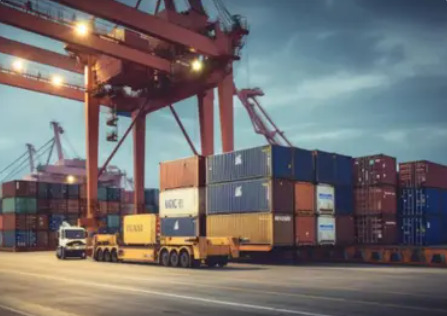
Supply chain disruptions are not a new phenomenon, and they are likely to persist in the evolving global landscape. The frequency and impact of disruptions have increased, making supply chain resilience a critical focus for businesses. In this article, we explore the concept of supply chain resilience, its significance, and strategies to build resilience effectively.
Understanding Supply Chain Resilience
Challenges in Achieving Supply Chain Resilience
Globalization and Complexity
The ever-expanding globalization and complexity of supply chains pose a significant challenge, making them susceptible to disruptions that transcend borders. Relying on a single source for critical components heightens vulnerability. To navigate this, businesses must diversify their strategies by fostering relationships with multiple vendors. By distributing responsibilities across various locations, organizations can reduce their dependence on a singular source, thereby mitigating the impact of disruptions originating from specific regions. Conducting thorough risk assessments to identify and address geopolitical, economic, and logistical risks is paramount for resilient supply chain management.
Just-in-Time Inventory
The adoption of just-in-time inventory management optimizes costs but leaves little margin for error. Any disruption in the flow of goods can quickly lead to shortages and operational setbacks. To navigate this challenge, organizations should embrace agile and flexible production processes that can swiftly adapt to changes in demand. This agility ensures that production can be adjusted promptly in response to fluctuations, preventing bottlenecks and minimizing the impact of disruptions on the supply chain. Leveraging technology for real-time monitoring and analysis, including advanced analytics and tracking systems, provides visibility into the entire supply chain. This allows for proactive decision-making and reduces the risks associated with just-in-time inventory.
Lack of Visibility
Many supply chains lack real-time visibility into their processes, hindering the ability to anticipate and respond effectively to disruptions. To address this challenge, businesses should invest in technology to integrate advanced data collection and analysis tools. This provides decision-makers with a comprehensive view of the supply chain. Implementing technologies such as IoT devices and AI-driven analytics enhances visibility, allowing organizations to monitor and manage supply chain activities in real-time. Regular supply chain audits, conducted by external experts, help in evaluating existing processes, identifying vulnerabilities, and recommending improvements to enhance overall visibility and resilience.
Inventory Management
Balancing the cost of holding inventory with the risk of stockouts is a delicate equation. Ineffective inventory management can compromise resilience. To navigate this challenge, organizations should continuously optimize inventory management by finding the delicate balance between holding costs and responsiveness. Implementing strategies such as demand forecasting, safety stock optimization, and dynamic replenishment models ensures that inventory levels are aligned with demand fluctuations. Dynamic, localized replenishment models should be implemented to ensure materials are delivered precisely when needed, minimizing the risk of stockouts and enhancing overall supply chain resilience.
Supplier Relationships
Weak supplier relationships contribute to a lack of transparency and trust, amplifying the impact of disruptions. To navigate this challenge, organizations should follow a clearly defined sourcing strategy linked to supply chain risks, prioritizing reliability over cost. Engaging in strategic sourcing that considers not only the cost but also the resilience and reliability of suppliers fosters long-term partnerships. Open communication and collaboration with suppliers, treating them as strategic partners, are crucial. Regular communication, joint problem-solving, and mutual understanding of each other's capabilities and constraints contribute to building a resilient supplier network.
Strategies for Building Resilience
Building supply chain resilience involves continuous adaptation and change across three core enablers: processes, people, and technology.
1. Processes: Rethinking Supply Chain Playbooks
Forecasting: Traditional forecasting methods need enhancement. End-to-end supply chain visibility is crucial for understanding demand and risk forecasts across the entire network.
Inventory Management: Shift from just-in-time to a more conservative inventory strategy, including increased buffer stock to counter longer lead times and disruptions.
Supplier Relationship Management: Clearly define a sourcing strategy linked to supply chain risks, diversify suppliers, and invest in strong supplier relationships to gain a competitive advantage.
Commodity Management: Identify critical commodities and establish a strategy to ensure a stable supply, even amid disruptions.
2. People: Talent Acquisition and Structuring for Success
Hiring and Retaining: The scarcity of skilled workers is a major challenge. Focus on talent acquisition to support supply chain resilience, seeking individuals with market knowledge and the ability to navigate challenges.
Organizational Structure: Establish specialized teams for commodity management and supplier relationships. Commodity managers focus on short-term goals, while relationship managers work on long-term strategies.
3. Technology: Embracing Digital Transformation
Real-time Analytics: Implement tools for real-time analytics and decision support to provide baseline data for better decision-making and risk mitigation.
Digital Transformation: Leverage advanced technologies, including AI, IoT, and big data analytics, for end-to-end supply chain visibility and predictive risk mitigation.
While managing processes, people, and technology is crucial, overarching strategies can further minimize vulnerabilities:
1. Define Your Resilience Goals
Supply chain resilience is unique to each company. Identify pain points, risks, strengths, and capabilities to tailor resilience plans to your organization's specific needs.
2. Strategic Product Design
Regularly update product designs to hedge against disruptions. Stay informed about market trends, legacy parts, and potential design changes needed to adapt to evolving supply chain dynamics.
3. Business Continuity Planning
Develop a comprehensive business continuity plan that addresses various disruptions, quantifies risks, and establishes clear strategies for managing crises when they occur.
Recommended Reading: 7 Crucial Benefits of Multiple Warehousing: Become A Local Competitor to Expand Your Business
Measuring Supply Chain Resilience
1. Time-to-Survive: Navigating Disruptions
In the ever-evolving landscape of business, disruptions are inevitable. The crucial factor lies in how swiftly an organization can rebound and resume its operations. Time-to-survive encapsulates the agility and preparedness of a business in the face of disruptions. It's not just about weathering the storm but doing so with minimal impact on customer commitments and overall efficiency.
Enhancement Strategies:
Establish robust communication channels for rapid response and decision-making during disruptions.
Implement and regularly update contingency plans, ensuring clear roles and responsibilities.
Conduct drills and simulations to fine-tune the response mechanisms and enhance readiness.
2. Time-to-Recover: Overcoming Backlogs
The resilience of a supply chain is tested not only by the disruption itself but by how efficiently the organization can recover and normalize its operations. Time-to-recover focuses on the duration required to bounce back and address any backlog that might have occurred during the disruption. Minimizing this duration is pivotal for maintaining customer satisfaction and preventing prolonged disruptions.
Enhancement Strategies:
Embrace agile and flexible production processes to swiftly adapt to changes in demand.
Leverage technology for real-time monitoring and analysis, identifying and addressing bottlenecks promptly.
Continuously optimize inventory management, finding the delicate balance between holding costs and responsiveness.
3. Time-to-Thrive: Assessing Post-Crisis State
Resilience is not just about bouncing back; it's about thriving in the aftermath of challenges. Time-to-thrive goes beyond immediate recovery, offering a holistic evaluation of how an organization evolves and improves post-crisis. This metric is instrumental in guiding strategic decisions, providing insights into the long-term impact of disruptions and highlighting areas of strength and improvement.
Enhancement Strategies:
Conduct thorough post-crisis assessments, extracting valuable lessons learned and areas for improvement.
Foster a culture of continuous improvement, encouraging teams to implement changes based on post-crisis evaluations.
Utilize feedback from customers, suppliers, and internal stakeholders to drive strategic enhancements
Relevant Reading: Integrated Logistics and Supply chain Coordination
Regularly evaluating and enhancing this triad of metrics empowers organizations to not only survive disruptions but to thrive in the dynamic realm of supply chain management. It's a continuous journey of refinement, adaptation, and strategic fortification—a journey towards building a supply chain that stands resilient in the face of uncertainties.
Building supply chain resilience is an ongoing process that demands constant adaptation to evolving challenges. By rethinking processes, investing in talent, embracing technology, and implementing strategic approaches, businesses can fortify their supply chains against future disruptions and emerge stronger from crises.
0 notes
Text
Building Resilience in Your Supply Chain: Strategies for Future Disruptions
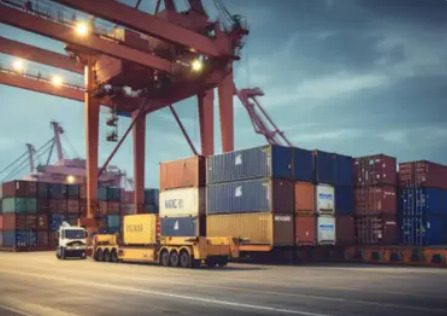
0 notes
Text
Warehousing and Distribution Services in Tamil Nadu, Kerala, Karnataka, Andhra Pradesh, Telangana
If you are in need of Warehousing and Distribution Services in Tamil Nadu, Kerala, Karnataka, Andhra Pradesh, Telangana, Driver Logistics is an exceptional choice. Their primary focus is on fortifying clients' supply chains and assisting in goal attainment. Driver Logistics recognizes the importance of allowing thriving businesses to prioritize their core functions. By taking on the logistics burdens, the company enables businesses to excel in their primary objectives. Operating as a trusted third-party logistics provider (3PL), Driver Logistics brings forth extensive experience, a robust network, and cutting-edge technology to facilitate seamless B2B fulfillment and logistics. Leveraging their expertise, they streamline processes, reduce costs, and enhance overall efficiency throughout your supply chain, regardless of your business size. Opting for Driver Logistics instills confidence in their capability to effectively handle your Automotive Supply Chain & Logistics needs, giving you the freedom to focus on your core operations and drive your success forward.
0 notes
Text
The Essential Guide to Smart Warehousing: Navigating Modern Logistics

Warehouse Management
Discover the transformative power of smart warehousing in navigating modern logistics. Dive into the four pillars – sensors, automation, AI, and sustainability – that redefine warehouse operations. Uncover the benefits, from operational efficiency to enhanced supply chain visibility, and explore how this strategic investment can elevate your business in today's competitive marketplace.
The modern business landscape is a tempestuous sea. Gone are the days of smooth sailing – today's currents demand constant agility and innovation. In this churning ocean of commerce, smart warehousing emerges as the lifejacket you need to stay afloat. It's not just a trendy buoy; it's a complete overhaul of traditional logistics, a metamorphosis that transforms your warehouse into a powerful engine of efficiency.
Unveiling the Secrets: What Lies Beneath the Surface of Smart Warehousing
Diving Deeper: The Pillars of Smart Warehouse Success
But what are the building blocks of this intelligent behemoth? Let's dive deeper and explore the four pillars that hold up the magnificent temple of smart warehousing:
1. The All-Seeing Eye: Sensors and IoT Integration
Picture your walls pulsating with data, your equipment whispering vital signs, and every corner alive with intelligence. Sensors become your omnipresent eyes and ears, monitoring inventory levels, equipment health, and environmental conditions in real-time. This constant, omniscient data stream empowers you to make data-driven decisions, banish inefficiencies, and ensure your warehouse operates at peak performance.
Unveiling the Potential of Sensors and IoT Integration in detail
· Inventory Intelligence: Deploy RFID tags, weight sensors, and camera-based tracking for real-time stock levels and location data.
· Predictive Maintenance: Leverage vibration sensors and acoustic monitoring to forecast equipment failures and schedule proactive maintenance.
· Environmental Optimization: Monitor temperature, humidity, and air quality with dedicated sensors to ensure optimal storage conditions and employee comfort.
· Data-Driven Insights: Aggregate sensor data from across your warehouse to identify inefficiencies, optimize workflows, and make informed decisions.
2. The Automated Orchestra: Robots and Automation Take the Stage
Reimagine repetitive tasks like picking and packing as a mesmerizing ballet performed by tireless robots. These tireless partners handle high-volume, error-prone tasks with superhuman precision and speed, freeing your human team for higher-level strategic thinking. Picture orders whizzing through the air on conveyor belts, flawlessly curated and dispatched in record time.
Let’s identifying the potential of Robots and Automation in detail:
· Automated Picking and Packing: Implement robotic arms and conveyor systems for high-volume, repetitive tasks, minimizing human error and boosting speed.
· Autonomous Mobile Robots (AMRs): Utilize self-driving robots for transporting materials, pallets, and finished goods, optimizing internal logistics.
· Automated Sorting and Classification: Employ robotic arms and vision systems for sorting items by size, type, or destination, streamlining fulfillment processes.
· Collaborative Robots (Cobots): Integrate safe, human-friendly robots alongside workers for tasks requiring dexterity and collaboration.
Read More: Importance of Smart Containerization in the Logistics Industry
3. The Data Whisperer: AI and Machine Learning Take the Helm
Imagine a digital braintrust constantly analysing your warehouse data, predicting demand with uncanny accuracy, and suggesting workflow improvements you never thought possible. AI algorithms become your secret weapon, optimizing everything from inventory levels to delivery routes, ensuring your warehouse operates like a finely tuned machine.
Here are some of the ways to empowering your warehouse with AI and Machine Learning:
· Demand Forecasting: Analyze historical data and market trends to predict future demand, optimizing inventory levels and avoiding stockouts.
· Dynamic Route Optimization: Leverage AI-powered algorithms to plan and adjust delivery routes in real-time, considering traffic, weather, and driver availability.
· Warehouse Layout Optimization: Use data analytics to redesign your warehouse layout for optimal flow of goods, minimizing travel distances and bottlenecks.
4. The Green Guardian: Sustainability Woven into the Fabric
Smart warehousing isn't just about efficiency; it's about responsibility. Energy-efficient lighting illuminates your aisles, while innovative solutions like solar power and waste-reduction strategies minimize your carbon footprint. This commitment to sustainability not only benefits the planet but also resonates with customers and boosts your brand image.
Weaving Sustainability into your Operations:
· Energy-Efficient Lighting: Upgrade to LED lighting and smart control systems to minimize energy consumption and carbon footprint.
· Renewable Energy Solutions: Explore solar power, wind power, or fuel cell technologies to generate on-site renewable energy.
· Waste Reduction Strategies: Implement recycling and reuse programs for packaging materials, minimizing waste generation and disposal costs.
· Sustainable Transportation: Choose fuel-efficient vehicles, optimize delivery routes, and explore alternative fuel options like electric trucks.
Recommended Reading: 7 Crucial Benefits of Multiple Warehousing: Become A Local Competitor to Expand Your Business
Reaping the Rewards: The Treasure Trove of Smart Warehousing
Smart warehousing isn't just a tech upgrade; it's a strategic investment for your business. Here are some key advantages:
1. Boosting Operational Efficiency
· Automated systems cut order processing times by up to 80%, ensuring faster and error-free tasks.
· AI-powered algorithms optimize delivery routes, reducing delivery times and fuel costs.
· Robots handling repetitive tasks decrease labor costs, freeing up human resources for higher-value tasks.
· Smart storage solutions maximize warehouse space, enhancing storage capacity and workflows.
2. Optimized Inventory Management
· Real-time tracking and predictive forecasting prevent stockouts and losses, ensuring timely availability of products.
· Automated inventory tracking replaces manual counts, saving time and reducing errors.
· Accurate demand prediction minimizes overstocking, optimizing inventory levels and cost-efficiency.
3. Swift Order Processing
· Streamlined processes enable faster order processing, offering same-day and hyper-local delivery options.
· Reduced cart abandonment and increased customer loyalty due to rapid delivery and reliable service.
4. Operational Cost Reduction
· Automation reduces labor costs and optimizes resource utilization, enabling investments in growth or team incentives.
· Energy-efficient systems lower bills while contributing to sustainability efforts.
· Automated sorting and recycling systems minimize waste disposal costs and enhance resource management.
· Real-time data insights aid in informed decision-making for cost-saving opportunities.
5. Enhanced Supply Chain Visibility
· Real-time tracking ensures complete supply chain visibility, identifying potential issues before they impact delivery.
· Improved collaboration with partners and proactive responsiveness to disruptions bolster relationships.
· Proactive communication and adjustments to delivery schedules build customer trust and reliability.
Relevant Reading: 7 Key Considerations When Choosing a Warehouse Location for Your 3PL Business
Remember, smart warehousing isn't just about technology; it's about a mindset. It's about embracing innovation, optimizing every process, and constantly seeking to improve. With the right approach and the right logistics partner, you can make difference. Get in touch with us today to redefine your logistics.
0 notes
Text
The Essential Guide to Smart Warehousing: Navigating Modern Logistics

0 notes
